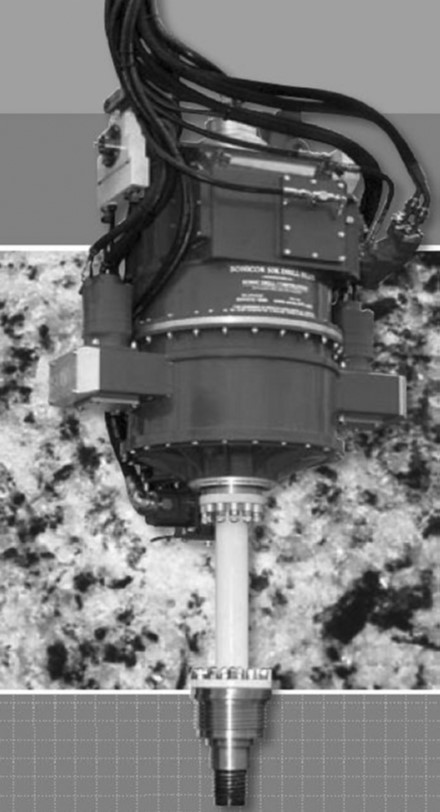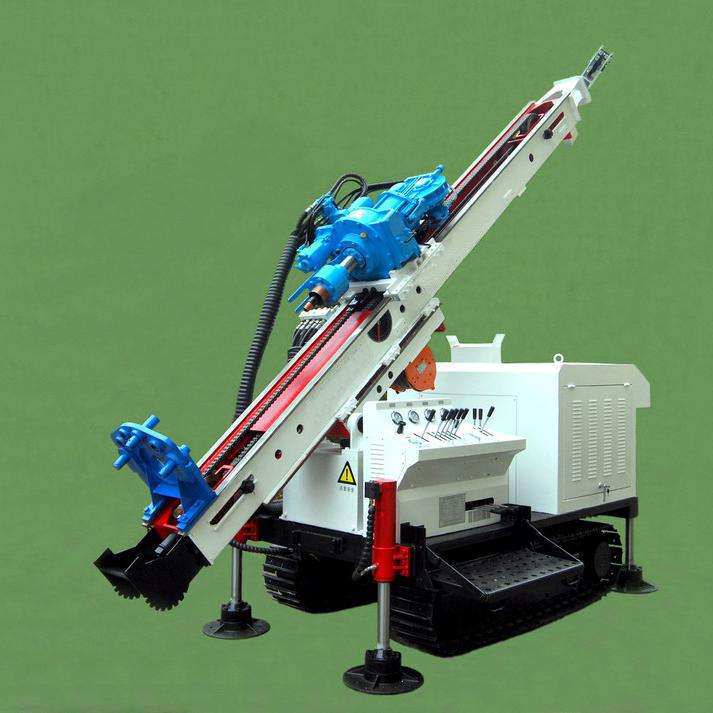
Privacy statement: Your privacy is very important to Us. Our company promises not to disclose your personal information to any external company with out your explicit permission.
This paper mainly introduces the working principle, drilling process, main advantages and application fields of sonic drilling.
How sound/sonic drilling works?
Sonic drilling adopted high frequency resonance energy to push the core tube and casing into the rock and soil layer.
During drilling, resonance energy is transmitted to the bit face through the drill string, while energy is evenly distributed to the bit face by the low-speed rotary drill string.
Because the vibration frequency belongs to the lower mechanical wave vibration range, can cause the human hearing, therefore calls the sound wave drilling.
The main equipment for sonic drilling is the sonic power head (see Figure 1), which is larger than the standard rotary power head and is driven by a hydraulic motor. It mainly consists of a rotary mechanism and a vibrator (see Figure 2).


The vibrator is composed of two balance wheels rotating in opposite directions, which can produce adjustable high frequency vibration.
The high frequency vibration and low speed rotary action of the power head, coupled with downward pressure, cause the drill string and ring bit to continuously push towards the rock layer.
In addition, the patented air-spring isolation system in the power head isolates the vibration from the rig itself and transfers the energy directly to the drill string.
The rig operator can control the amount of working energy generated by the vibrator to match the formation drilled to achieve the optimal drilling speed.
Resonance occurs when the vibrator vibrates at a frequency consistent with the natural resonant frequency of the drill string.
At this point, the drill string ACTS like a flywheel or spring, transferring the maximum resonant energy directly to the bit face.
High frequency vibration causes the cutting edge of the bit to cut, shear and break away from the material in its drilling path, and even causes the surrounding soil particles to liquefy, making drilling easier.
At the same time, the vibration removes the soil particles from the side of the drill string, thus greatly reducing the frictional resistance between the drill string and the hole wall. As a result, the drilling speed is extremely fast, up to 300mm/min in many formations.
Compared with other drilling methods, sonic wave drilling technology has the following advantages:
(1) Fast drilling speed.Compared with traditional overburden drilling, sonic drilling effectively combines vibration, rotation and pressure drilling, especially vibration action can displace soil particles and make soil liquefaction, so as to obtain higher drilling speed.In general, sonic drilling is three to five times faster than conventional rotary and spiral drilling, and in some formations up to nine times faster.
(2) Good fidelity of rock and soil samples.Sonic drilling has little interference to surrounding strata, and continuous rock and soil samples with large diameter (100-300mm), strong representative and good fidelity can be collected from overburden and soft rock, so as to accurately determine the depth of stratum contact interface, rock and soil properties and composition, as well as pollutant content.
(3) Less environmental pollution.Under normal circumstances, sonic drilling does not need to use mud, additives or other hole cleaning media, drilling waste than conventional rotary drilling 70% ~ 80%, greatly reducing the drilling fluid to the environment pollution.
(4) Small construction risk.Sonic drilling and sampling generally use a two-pipe system, the core tube and outer casing are separately advanced successively, and the outer casing is immediately followed to the hole bottom of the previous coring after core extraction.In this way, the casing can well protect the hole wall and prevent the hole from collapsing, while isolating the aquifer and avoiding cross-contamination.
(5) Low drilling cost.Compared with the traditional drilling method, the sonic drilling speed shortens the construction period and reduces the labor cost.Moreover, less waste is generated during drilling, which reduces the cost of on-site cleaning;Moreover, the obtained geotechnical samples are accurate and the geological information is reliable, which brings better indirect benefits.
(6) Wide adaptability.Acoustic drilling method is suitable for all kinds of overburden and soft rock stratum, such as sand soil, silty sand soil, clay, gravel, coarse gravel, bleach, moraine, rubble pile, garbage accumulation (including wood, steel plate, concrete, asphalt, etc.), sandstone, limestone, shale, SLATE, etc.
It can effectively collect continuous rock and soil samples with little interference.Due to its incomparable advantages above, sonic drilling can be applied in many drilling fields, including:
(1) Mining.It can be used for heap leaching or tailings sampling, monitoring well construction and water sampling, precipitation or rope coring because it can be accurately sampled in loose formations.
(2) Environmental drilling.Because casing runs continuously during drilling and little or no drilling fluid is used, the risk of cross-contamination is eliminated and high-fidelity samples can be collected (see Figure 3), making it the best choice for environmental drilling.

(3) Geotechnical engineering investigation.
The continuous geotechnical samples with good fidelity in overburden and soft rock provide ideal means for obtaining accurate geotechnical mechanical properties, hydrogeological and geochemical information, etc.
(4) Mineral exploration.
When prospecting for placer gold deposits, acoustic drilling can be very successful in collecting continuous gold ore samples.
In petroleum and natural gas seismic exploration, acoustic drilling is also an ideal drilling method for blasting hole construction.
(5) Hydrologic well drilling.
The acoustic drilling is fast, the aquifer is accurate, the two-pipe system is conducive to filter installation, and the clean drilling can reduce the well washing time and waste disposal amount.
(6) Geotechnical engineering construction.
It can be used for concrete filling pile, steel sheet pile, soil nail, anchor pile, crack hole, grouting hole, anchor cable hole and other engineering construction.

Previous: Types of Wells

Privacy statement: Your privacy is very important to Us. Our company promises not to disclose your personal information to any external company with out your explicit permission.

Fill in more information so that we can get in touch with you faster
Privacy statement: Your privacy is very important to Us. Our company promises not to disclose your personal information to any external company with out your explicit permission.